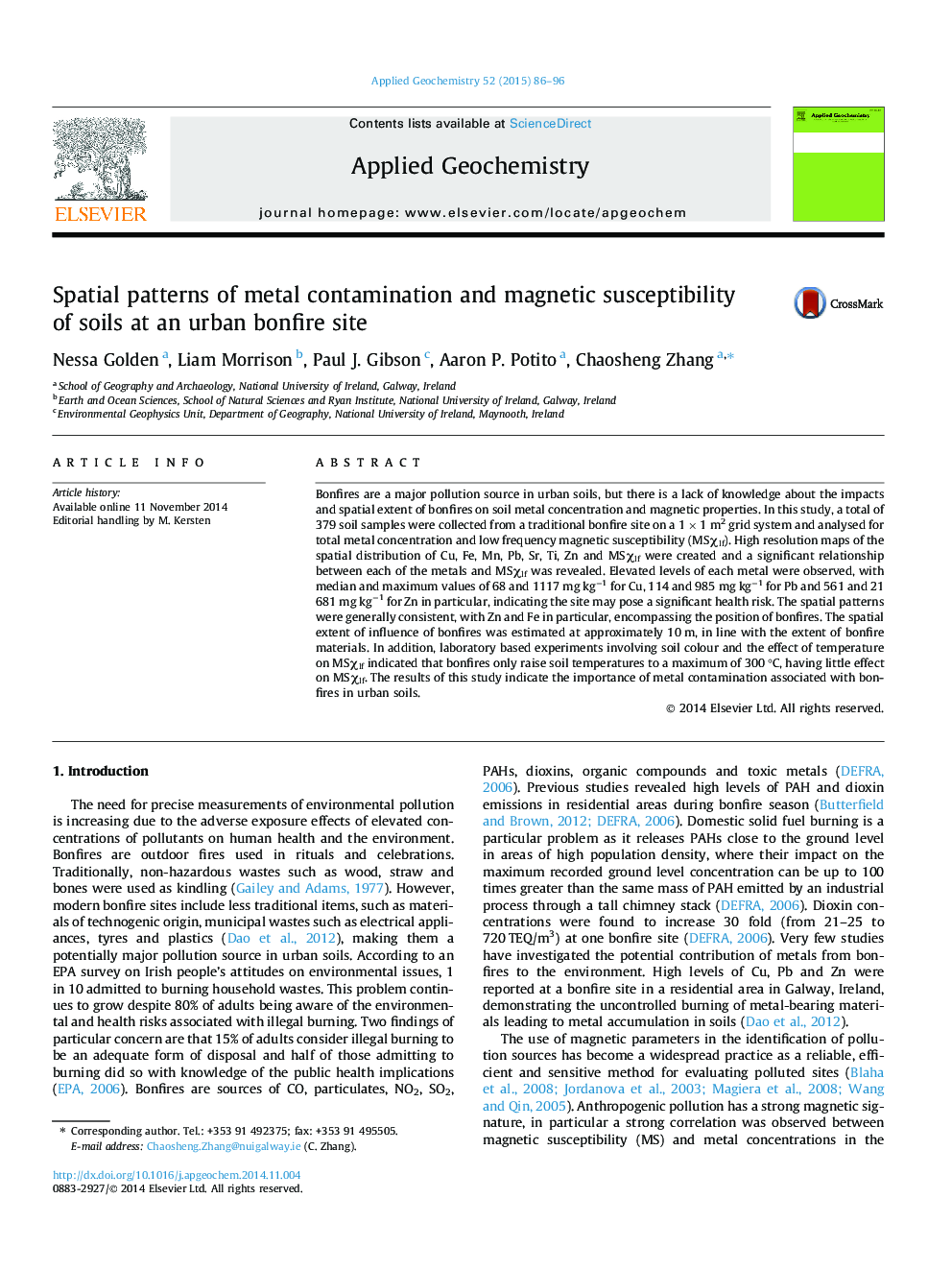| Article ID | Journal | Published Year | Pages | File Type |
|---|---|---|---|---|
| 4435718 | Applied Geochemistry | 2015 | 11 Pages |
•Bonfires are a significant source of metal pollution in urban soils.•The spatial range of influence of a bonfire is estimated at approximately 10 m.•Hotspot analysis of metals can help to identify bonfire locations.•Heating through Bonfire had negligible effects on soil magnetic susceptibility.•High density sampling at a small-scale allows for high resolution mapping.
Bonfires are a major pollution source in urban soils, but there is a lack of knowledge about the impacts and spatial extent of bonfires on soil metal concentration and magnetic properties. In this study, a total of 379 soil samples were collected from a traditional bonfire site on a 1 × 1 m2 grid system and analysed for total metal concentration and low frequency magnetic susceptibility (MSχlf). High resolution maps of the spatial distribution of Cu, Fe, Mn, Pb, Sr, Ti, Zn and MSχlf were created and a significant relationship between each of the metals and MSχlf was revealed. Elevated levels of each metal were observed, with median and maximum values of 68 and 1117 mg kg−1 for Cu, 114 and 985 mg kg−1 for Pb and 561 and 21 681 mg kg−1 for Zn in particular, indicating the site may pose a significant health risk. The spatial patterns were generally consistent, with Zn and Fe in particular, encompassing the position of bonfires. The spatial extent of influence of bonfires was estimated at approximately 10 m, in line with the extent of bonfire materials. In addition, laboratory based experiments involving soil colour and the effect of temperature on MSχlf indicated that bonfires only raise soil temperatures to a maximum of 300 °C, having little effect on MSχlf. The results of this study indicate the importance of metal contamination associated with bonfires in urban soils.
